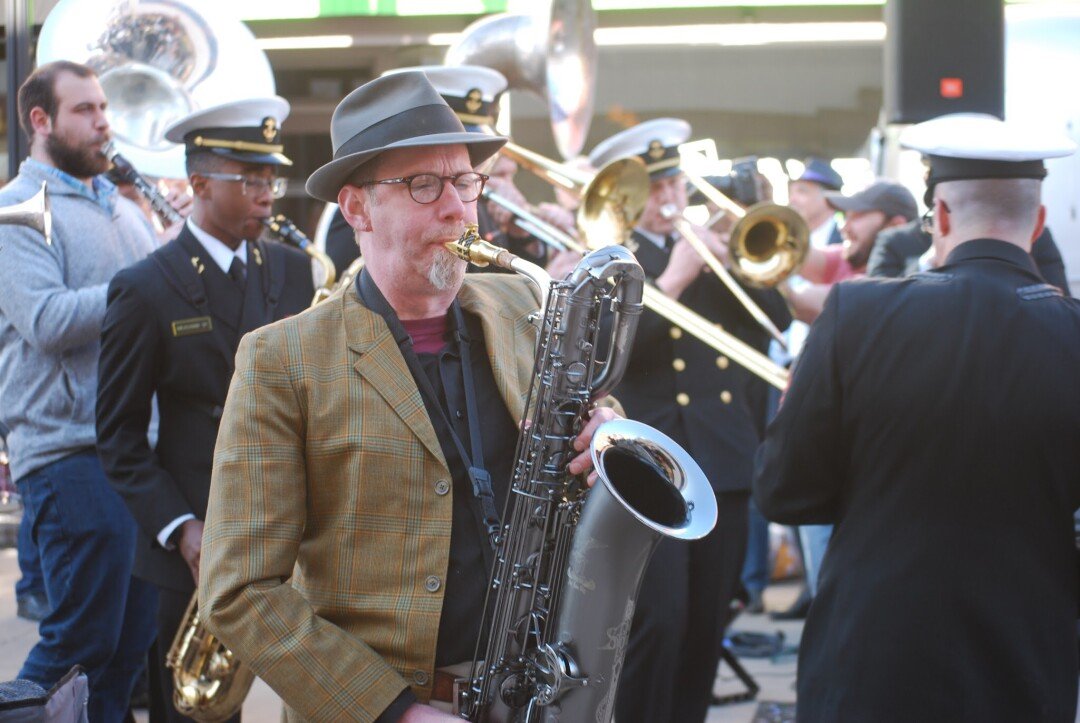Creating a Vibrant Economy: Creative Economy Week kicks off in Eau Claire
Julia van Allen, photos by Titus Williamson |

Artistic production and consumption are complex topics. Are you ever curious how you play into the equation? From May 12-19, the Chippewa Valley will celebrate its flourishing art community with Creative Economy Week, a statewide effort created by Arts Wisconsin and the League of Wisconsin Municipalities. Visit any one of the events held all week to learn where you fit into the creative movement! These events will invite the Chippewa Valley to explore all facets of the creative process and the economics behind it.
This week-long occasion boasts events that will touch on multiple creative mediums. Tours, musicals, performances, literary readings, panels, workshops, and a mixer provide opportunities for attendees to experience not only art in all of its forms but also the family of artists that calls the Chippewa Valley home. The community will be privy to the ins and outs of the artistic microcosm blooming in the Chippewa Valley, exploring the processes and successes of these homegrown artists. Nothing is off limits here.
In the Chippewa Valley, Downtown Eau Claire Inc. is spearheading Creative Economy Week through coordinator Liz Brodek, who hopes to make this year’s festivities the best yet. Over the past few years, Creative Economy Week has gained traction as Vallians and visitors alike gathered to praise all aspects of the creative process and product.
The concept of a creative economy was developed in the early 2000s by Dr. Richard Florida and has become pivotal to discussions about how the U.S. economy benefits from the work done by creative professionals, including artists, designers, programmers, educators, and more. Economies aren’t solely built up on corporations and conglomerates, they’re also dependent on entrepreneur sand creator.
Among the highlights of the week will be a keynote speech by Michael Seman, director of creative industries research and policy at the University of Colorado-Denver, at 6pm Monday, May 14, at The Oxbow Hotel. Seman, who has researched and written extensively about how music scenes can transform communities, will deliver an address titled “Eau Claire: From Creative Economy to Creative City.” He will also moderate a panel of local creatives and officials to discuss the topic.
Events in the following days include an artist reception with painter Terry Meyer at the Lakely Gallery from 5-8pm Tuesday, May 15; a panel titled “How to Become a Full-Time Maker” from 6-8pm Wednesday, May 16, at Red’s Mercantile; a discussion on the state of craft brewing at 7pm Thursday, May 17, at the L.E. Phillips Memorial Public Library; an Artist Market kick-off event, mixer, and public art forum 6-8pm Friday, May 18, at Tangled Up in Hue; and much more. There’s something for everyone here! A background in the arts isn’t necessary: Newbies and novices will find themselves immersed in a collaborative effort to make the Eau Claire artistic community the best that it can be.
For full details on all Creative Economy Week events, visit downtowneauclaire.org/events/our-events/creative-economy-week
SO WHAT IS IT?
Creative Economy Week was launched in 2016 by Arts Wisconsin and the League of Wisconsin Municipalities. This year it runs May 12-19. Arts Wisconsin assembled the following figures to help quantify the size of Wisconsin’s creative economy:
• According to Dun and Bradstreet, there are nearly 9,200 businesses in Wisconsin involved in the creation or distribution of the arts that employ over 50,000 people – representing 3.2 percent of the state’s businesses and 1.4 percent of its employees.
• The U.S. Bureau of Economic Analysis reports that the arts and culture sector is a $730 billion industry, providing 4.2 percent of the nation’s GDP – a larger share of the economy than transportation and agriculture. In Wisconsin, the nonprofit arts industry generates $657 million in economic activity annually, supporting 22,872 jobs and generating $64.9 million in state and local government revenue.
• Attendees at Wisconsin’s nonprofit arts events spend $19.06 per person, per event, beyond the cost of admission on items such as meals, parking, and babysitters.


















